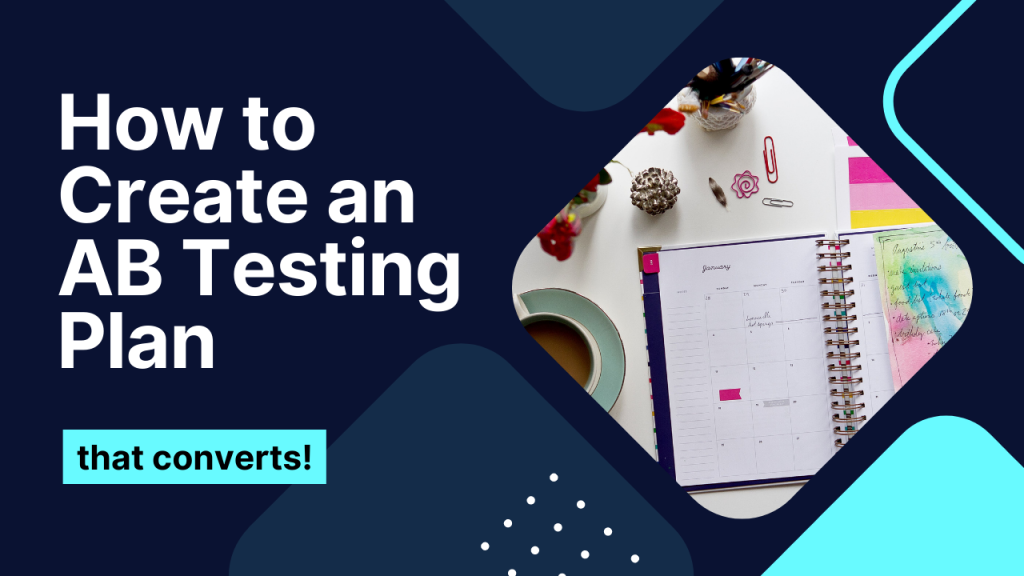I get it. Marketers like us barely get enough time to work, let alone plan something, however, as the saying goes "by failing to prepare, you are preparing to fail" - Benjamin Franklin. Although we are mostly too occupied with our super busy routines, certain things must be planned as they help us achieve our goals. When we create our work, almost every one of us is excited to know what will engage our users and make them click and convert. By using our experience we can make educated guesses on what works for our users, but nothing beats hard facts and data. Therefore, running an A/B test is a much better solution rather than relying on assumptions.
What is an A/B Test?
A/B testing or split testing is a marketing experiment where the audience is split across a number of variations in a campaign to check which variation converts your target audience better. It is basically a method where two versions of a webpage or an app are tested against each other, one half of the audience is made to test version A, while version B is tested by the other half.
A/B testing is important as the audience perform differently to different types of content. The A/B test is quite effective for marketers as the cost is low, but the rewards are quite high. It could also be taken as something that creates diversity, as a method that works for one company might not work for another. This testing method can increase your website conversion rate and lower your bounce rate. As long as the goals are clear, you have a clear hypothesis.
Steps to do before the A/B Test
Pick One Variable
The key to having a successful test is to pick one ‘independent variable’ from the multiple variables you want to test as you optimize your page. In this way, you will be sure which one variable is responsible for the changes in performance. You can test the other variables later. Just make sure to test one at a time so you get clear, actionable results.
Set Your Goal
Before you run the test, decide on your primary conversion goal. This is important as it will help identify if your test is a success. Just think about where you would want to see the user at the end, and you’ll have a clear goal to measure your results against.
Create 'Control' & 'Challenger'
Now that you have your variables are chosen and a goal, set up an unaltered version of the page you’re testing as your ‘control’. Now create a ‘challenger’, a variation of the product to test against the ‘control’. For example; if you’re wondering whether to include a special offer in a sign up or purchase, set up the control with no offer and add the offer in the challenger.
Split the Traffic Equally
For conclusive results, you must split your sample groups equally. If you send more traffic to one variation vs another by a large enough majority you would be tainting your results with a pre-biased decision.
Decide the Grounds You're Going to Judge the Results
After setting up your goal, you need to decide the grounds you’re going to judge the results to justify opting for one variation over another. Statistical significance is an important part of the test. Use a high percentage of confidence level, preferably 98% to be completely sure about the results.
Steps to do during the A/B Test
Use the Proper Tool
To conduct an A/B test, the basic requirement is a proper testing tool. There are multiple options available, Optimizely, VWO, and Split Hero. The more efficient the testing tool, the quicker you can get up and running and start producing better results.
Test the Variations at the same time
Another important factor for an effective A/B test is timing. You need to run the test for both variations simultaneously to get the best results. For example, if you test version B after a month of testing version A, it won’t be evident what caused the change. Was it the variation or the time-lapse?
Give the Test Time for the Best Results
Run your test for enough time so you will be able to get useful data as your result. Statistically significant results could be collected in days, weeks, or even months. It depends on the nature of your traffic and the way you’ve created the test. The length of the test is generally recommended to be 1 to 3 months.
Steps to do after the A/B Test
Concentrate on the Goal Metric
Keep all your focus on the primary goal metric you marked when doing the analysis of the results. This will help make an informed decision.
Calculate the Significance
Now it’s time to calculate whether the results you get are significant enough to make a change. Use the calculator in your A/B testing tool to find out the confidence rate. Use this value against your statistical significance to get the final result.
Implement the Results
If the final results announce one variation to have performed statistically better than the other, you have a clear winner. Remove the losing version. Now implement the winning variation on your website for maximum benefit. If none of the variations were statistically better, it means that the variables were not as effective.
Test More Features
Even if your A/B test has given you some new marketing strategies and more traffic on your website, don’t stop there as there is always room for more optimization. You can try out more new features in your content and test the effectiveness by planning another A/B test. Trying out new stuff can create new opportunities and improve your conversion rates even more.
